Walking the world with your baby--2020 Suzhou Memories












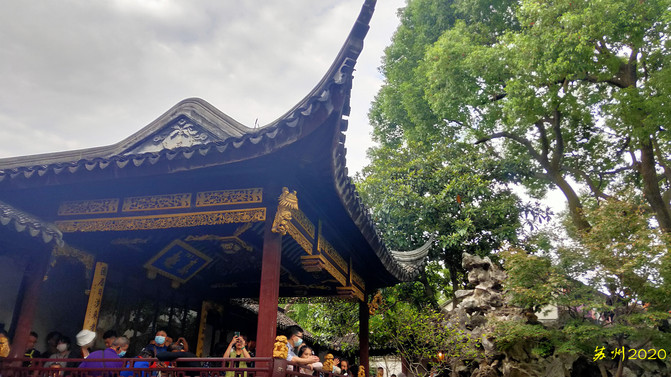

It was past four o'clock when I came out of Lion Grove, and there was no time to enter the scenic spots, so I walked to Pingjiang Road. Pingjiang Road is a famous historical street and alley in Suzhou. A path paved with traditional long stones runs along the river. Ships travel in the river and pedestrians on the road."Water and land are parallel, and the river streets are adjacent". It is a typical characteristic of the Jiangnan water town. There are many old-fashioned houses around the road, and most of them on one side of the street have been converted into shops. Now they are dazzling and dazzling. Most of the houses on the west of the river are built along the river. They are old houses with white walls and green tiles, wooden grids and flower-stained windows, which are light and distinct. Most of the outer walls are mottled, but they are like peeling off a blue painting. Many vines and vines grow from the peeling off, swaying in the wind and making them look lively. Vertically connected to Pingjiang Road are many narrow streets and alleys. Since ancient times, there have been many talents in Jiangnan. Behind each street and in every private garden there may be a long story. However, this also highlights the other side of life in Suzhou. On the other hand, market life and Qing Dynasty repair courtyard have always represented each other
In the city, the elegant and lofty literati taste naturally refined Suzhou's spiritual essence, while the aesthetic taste of "hiding in the city" also needs to be fulfilled by the fireworks of the world. In addition to Pingjiang Road being famous for its history, its delicious food is also one of its characteristics. So, for dinner, we tasted the characteristics of Su Bang cuisine at a tuzao restaurant called Fish Food Rice.

October 6, Nets Master Garden-Panmen-Zhouzhuang
In the morning, we first arrived at the Master of Nets Garden. The Master of Nets Garden is not large, less than one-sixth of the size of Humble Administrator's Garden. However, with its exquisite garden layout, deep cultural connotations, and elegant garden atmosphere, it has become one of the classics of small and medium-sized classical gardens in Jiangnan.
The Master of Nets Garden is divided into three parts, the east is the mansion, the middle is the main garden, and the west is the inner garden. The residential area has three entrances to the front and back, with high and open buildings, including sedan halls, halls, and flower halls. The interior decoration is elegant and clean, and the exterior brick carving is fine. It can be called a representative work of the Jiangnan official residence. The main garden is on the west of the mansion, and the main passage is a small door on the west side of the sedan hall. The lintel is embedded in the brick forehead of the Qianlong era "Net Master Small Building". The main garden focuses on water as the center, surrounded by ponds and pavilions and scattered mountains and rivers. In the west is the inner garden, which is entered from the moon cave door of "Tanxi Yuyin", and there are three small houses on the north side, named "Dian Chunyu". Lake stones are set in the north of the pavilion, and plum trees, bamboo and plantains are used to form a small bamboo and stone landscape. The west suite of the pavilion was originally the "Dafeng Hall" studio of the famous painter Zhang Daqian and his brother Zhang Shanmei. It is said that Zhang Daqian once raised a tiger in this courtyard to make paintings.










Panmen is located in the southwest of the ancient city of Suzhou. It was built in Wuzixu of the Wu Dynasty in the Spring and Autumn Period. It was an important water and land passage into Suzhou City in ancient times. Entering the Panmen Scenic Area, you will be facing a renovated Ruiguang Tower. The Guruguang Tower was built during the Jingde period of Zhenzong in the Northern Song Dynasty. I don't know if this building was rebuilt in recent years, but I don't have this tower in my impression. The existence of Panmen's water and land gates is unique in the country. The two land gates have both inner and outer layers. The two gates form a Wengcheng, which is easy to defend but difficult to attack. It is convenient for land and water traffic in ordinary times. It is an ingenious military function building adapted to the southern water city. The Wumen Bridge on the edge of the Panmen Gate was originally built in the Song Dynasty. The current bridge was built in the 11th year of Tongzhi of the Qing Dynasty (1872). The arch span is 16 meters long and the arch height is 9.85 meters. It is the largest single-hole stone arch bridge in Suzhou. It has a simple shape and is all made of Jinshan stone, with stone steps at both ends connected, reaching fifty steps at each end.
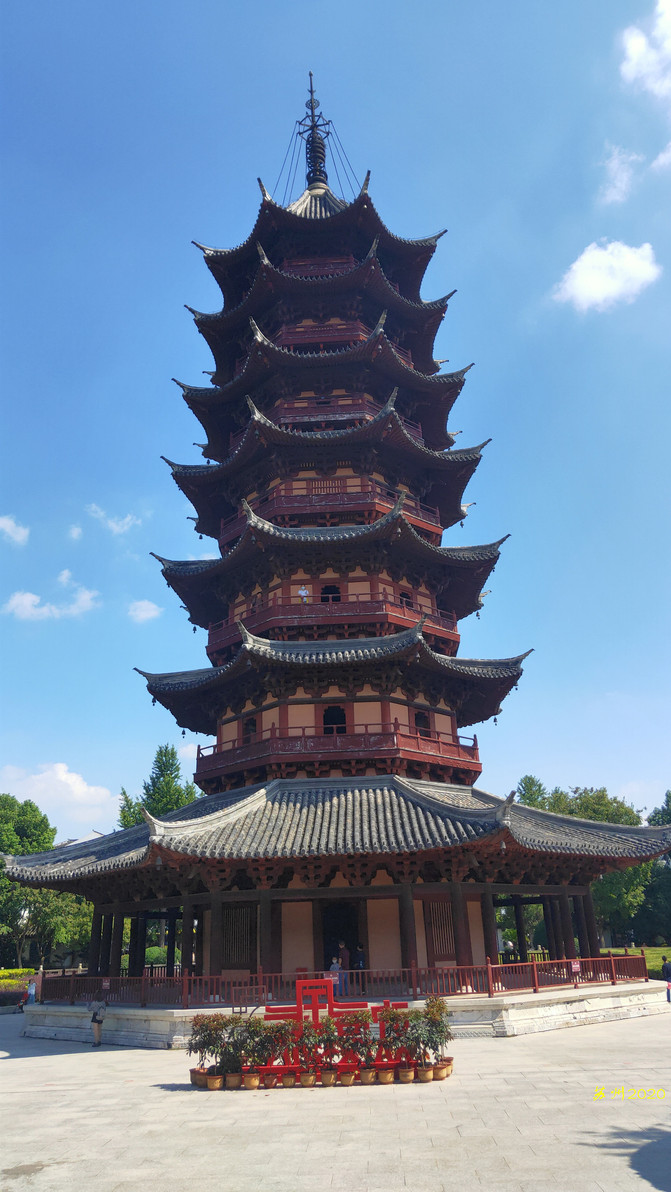
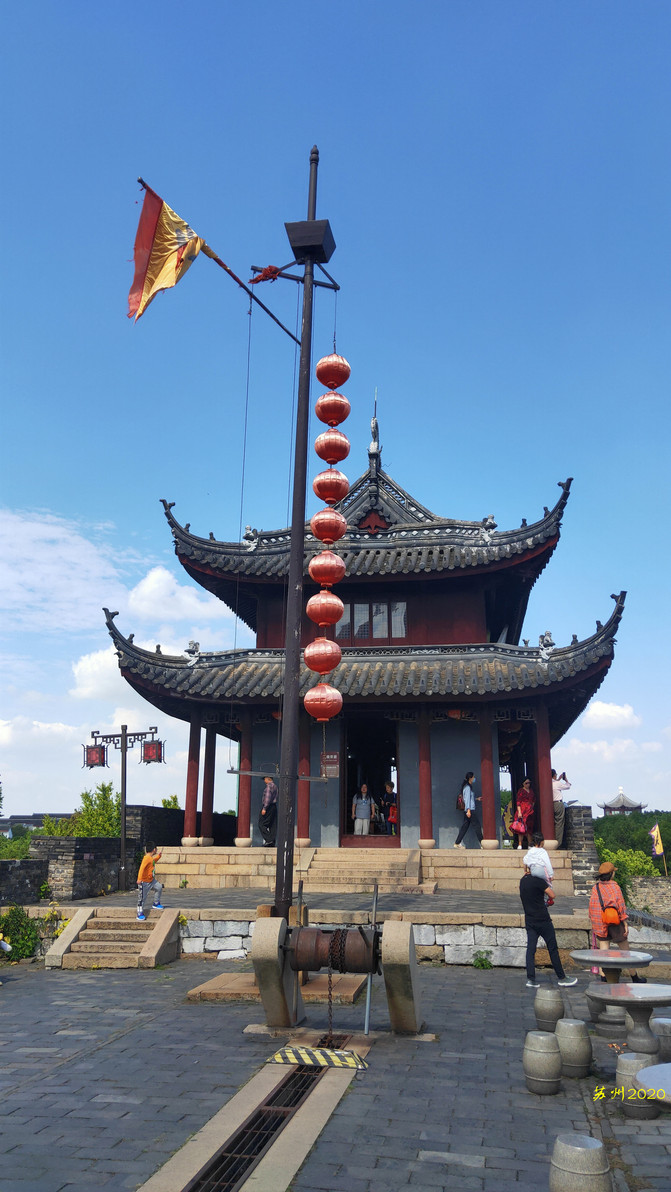








After coming out of Panmen Scenic Area, I took a taxi to the gathering point on Pingqi Road, preparing to take a night tour of Zhouzhuang with a group. When we arrived at the meeting place, the KFC I had ordered online in advance was delivered quickly. The tourist bus drove to the parking lot outside Zhouzhuang for more than an hour, and from here, changed to a cruise ship and entered the village. I came to Zhouzhuang with my colleagues many years ago, and I drove all the way out of the gate of the scenic spot.
The cruise ship shuttled through the social line between Jiangsu and Shanghai, drew a semicircle between Baixian Lake and South Lake, and finally docked at the South Lake Pier. At this time, the sky was beginning to get dark. Get off the boat and pass through the Quanfu Long Bridge, pass through Quanfu Temple, and enter the core scenic spot of Zhouzhuang Town. The most famous scenic spots in Zhouzhuang Ancient Town are Fu 'an Bridge, Shuangqiao and Shenting. Fu 'an Bridge is the only three-dimensional bridge-building built in Jiangnan; the double bridge is connected by two bridges. It has a unique shape and cleverly arranged, connecting the water town of four rivers. The bridge is an arch and the small bridge is slightly flat, forming a standard. The right angle fully demonstrates the aesthetics and wisdom of the ancients. Zhouzhuang is also famous around the world for its double bridges. Shenting is the residence of Shen Wansan, a wealthy businessman in Zhouzhuang. It is a Qing-style courtyard house with seven entrances and five gate buildings. There are more than 100 houses of large and small sizes. The overall structure is strict and the local decoration is exquisite, demonstrating the owner's pride of being rich.





Not long after, the sky had completely darkened, and the lights in the ancient town were quite brightly lit up. One after another, small lanterns hung under the eaves lit up the eaves of Zhouzhuang, the wooden doors of Zhouzhuang, and the river water of Zhouzhuang along the river. The old houses quietly looked in the mirror in the water and admired their own makeup with lights and colors. The neon lights hanging along the shape of the bridge and the tree lights near the side are reflected in the water one by one. Under the colorful lights, the river surface is also integrated with extremely rich colors. One after another, rowing boats shuttle through it, or fantasy dreams. What kind of people and things have they experienced before they can be brought to such a situation.





When we came out of the gate of Zhouzhuang Ancient Town, we watched the live performance "Four Seasons Zhouzhuang". The performance was staged on the stage set of "Small Bridge, Flowing Water, and People's Lives". More than a hundred professional actors and local farmers and fishermen actors used the four seasons of life of the people in the water town. The depiction of the paintings demonstrated the regional, folk and artistic nature of the traditional culture of the Jiangnan water town. The whole performance was gorgeous and magnificent, without losing the flavor of life and the atmosphere of the market.
It was already past 11 o'clock in the evening to return to Guanqian Street by car. While visiting Zhouzhuang, I only ate two Wansanti dumplings and some snacks at night. So I passed by a Chongqing Chuanxiang restaurant and had a rich midnight meal.



October 7, Huqiu-Lingering Garden-Humble Administrator's Garden
Still sleep until you wake up naturally in the morning, which is the biggest advantage of taking your child for free travel. I still didn't go out until after 9 o'clock, and I still had a bowl of Wuyue noodles with different toppings for each person. The first stop today is to take the bus to play Tiger Hill.
Tiger Hill is worthy of being one of the symbols of Gusu City. I can see the leaning figure of Tiger Hill Tower in the car from afar, like an old man, telling its long history and vicissitudes without reservation.

Huqiu Mountain Scenic Area is located in the northwest corner of the ancient city of Suzhou. It has a long history of more than 2500 years. It is known as "the No. 1 Scenic Spot in Wuzhong" and "the No. 1 Mountain in Wuzhong". Su Dongpo, a great poet of the Song Dynasty, once wrote the famous saying that "Suzhou does not visit Tiger Hill and not visit Luqiu is a debt of two." According to the Records of the Historian, King Helu of Wu was buried here. It is said that three days after the burial, a "white tiger squatted on it", hence the name Tiger Hill. Another saying is "Qiu is like a squatting tiger", named after his shape. Huqiu Mountain is only more than 30 meters high, but it has the style of "the surface of the valley on the left of the river". It is surrounded by rocks and valleys, with thousands of weather and scenery. It also has three unique scenery, nine suitable scenery and eighteen scenic spots. The most famous of them are Yunyan Temple Pagoda (Huqiu Pagoda), Sword Pond and Thousand People Stone.
Yunyan Temple Pagoda, which is also the Tiger Hill Pagoda, is a symbol of ancient Suzhou. It was built in the sixth year of Xiande of the Zhou Dynasty after the Five Dynasties (AD 959) and in Xinyou (AD 961), the second year of Jianlong of the Song Dynasty. It has a history of more than a thousand years. The tower is 47.7 meters high and has seven floors and eight sides. The tower slopes north-northeast. The top of the tower is 2.34 meters away from the center, and the maximum inclination angle is 3 degrees and 59 minutes. The Tiger Hill Tower is also known as the "Leaning Tower of Pisa in China". It is the earliest existing pagoda in Jiangnan. It is a stupa with a large scale and exquisite structure.



There are three reasons why the Sword Pond is called the Sword Pond. First, it looks like a flat sword from above; second, it is said that 3,000 swords of Bian Zhu and Yuchang were buried for King Helu of Wu, hence the name; third, it is said that Qin Shi Huang and Sun Quan both came here to dig swords, and the sword pond was dug by them (in fact, the sword pond was naturally formed). Jianchi can be said to be the most mysterious place in Tiger Hill. Legend has it that the opening of the tomb of King Helu of Wu is here. Looking north from the Thousand People's Stone, there are four big characters "Tiger Hill Sword Pool" engraved next to the round door of the "Unique Cave". They are rich and powerful. They were originally written by Yan Yan, the only son of Yan Zhenqing, a great calligrapher in the Tang Dynasty. The stone wall inside the round cave is also engraved with "Wind Valley and Cloud Spring". The brushwork is elegant and is said to be written by Mi Fu, one of the four major calligraphers of the Song Dynasty. On the left wall of the cliff, there is the word "Sword Pond" in seal characters, which is said to be written by the great calligrapher Wang Xizhi. It's amazing!



The Thousand People Stone is also known as "Thousand People Sitting". At the end of the mountain road, the three seal characters "Thousand People Sitting" are engraved on the stone. Jiu Zhiyun: "The lecture was named after thousands of people sitting in the hall." "Wu Di Ji" said: "Tiger Hill Spring Stone, the winner is the sword pool, where thousands of people sit."
In addition, the Tiger Hill Scenic Area also has many cultural and historical landscapes such as Zhanniang Tomb, Hanhan Spring, Jianjian Stone, Erxian Pavilion, Yongcui Villa, Xixi Huancui, etc., which are too numerous to mention.

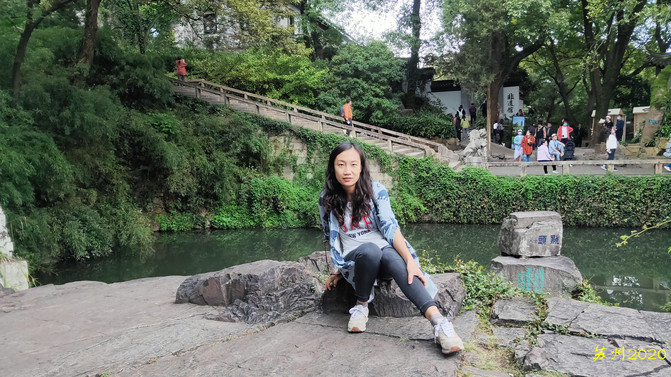



The Lingering Garden is located between Huqiu and Humble Administrator's Garden. So when we came out of Huqiu, we took the bus to the Lingering Garden first. The Lingering Garden, together with Humble Administrator's Garden, Master of Nets Garden, and Huanxiu Villa, is jointly included in the World Heritage List. It is one of the representative works of Suzhou's garden art. The Lingering Garden is famous for its architectural art. The halls are grand and gorgeous, and the courtyards are full of changes. The entire garden adopts irregular layout, making the garden buildings integrate with mountains, water and stones to present a natural interest. Cloud walls and buildings are used to divide the garden into four different scenic spots: central, east, north and west. The pavilions, halls and pavilions in the park are of uneven height, and the winding corridors continue for more than 700 meters. It is quite a wonderful way to change the scenery by step. The buildings account for about one-quarter of the total area of the park. The architectural structure represents the Qing Dynasty style. It creates numerous and unique landscapes within a small range, and everywhere displays the artistic art of gardening that is close to the mountains and forests and sees the big ones in small areas. The famous Guanyun Peak in the Lingering Garden is said to be a relic of the Flower Stone Gang of the Song Dynasty. It is 6.5 meters high and is the tallest lake stone in the Jiangnan garden towel. Just like more than 20 years ago, I sat on the fence in front of Guanyun Peak and left a photo recording the marks of time.
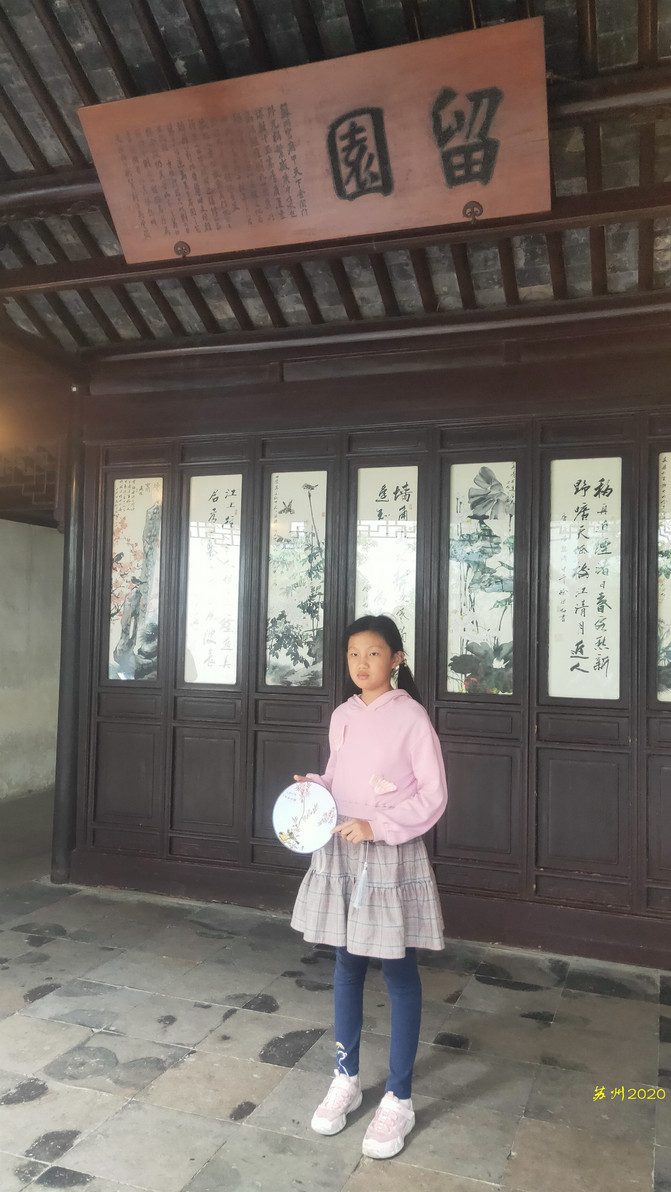





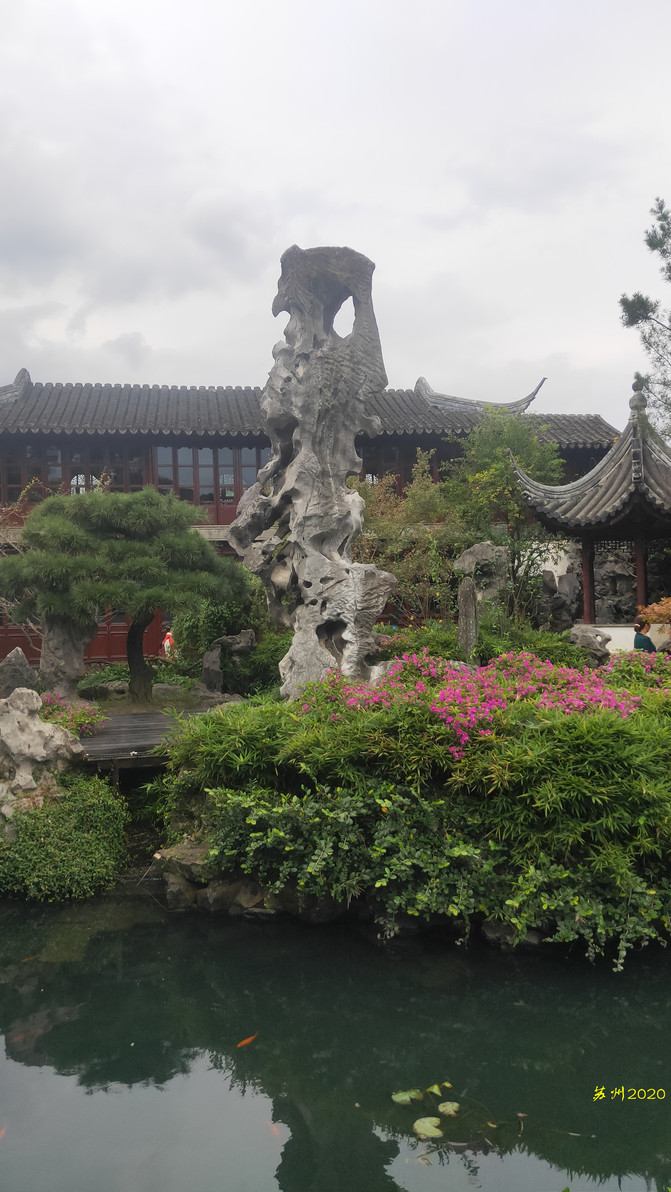


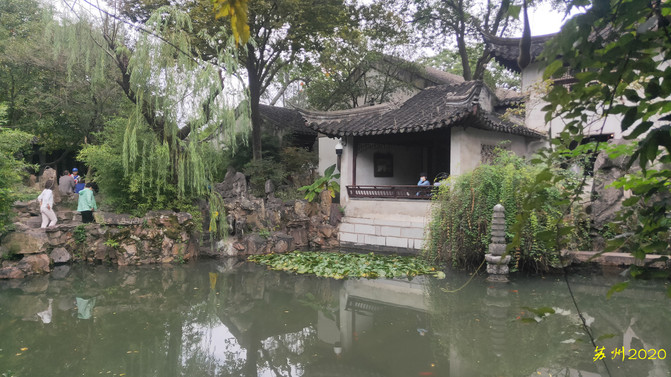


Today's last stop is the Humble Administrator's Garden, the largest existing classical garden in Suzhou. Before entering the garden, we found a random Suzhou local restaurant to fill our stomachs and rest.
Humble Administrator's Garden, together with Beijing Summer Palace, Chengde Summer Resort, and Suzhou Lingering Garden, is known as China's four famous gardens. Founded in the early years of Zhengde in the Ming Dynasty (early 16th century), it is a representative work of Jiangnan classical gardens. The whole garden is centered on water, surrounded by mountains and rivers, exquisite halls and pavilions, lush flowers and trees, and has a strong Jiangnan water town characteristics. Over the past 400 years, Humble Administrator's Garden has been divided and merged several times, either as a "private" residence, a "golden house" for hiding treasures, or a "royal residence", leaving behind many relics and allusions that are tempting to explore.

Humble Administrator's Garden is divided into three parts: east, middle and west. The east garden is open and spacious, the middle garden is the essence of the whole garden, and the west garden is beautifully built and has its own characteristics. The eastern part is all newly built, with the main layout being Pinggang distant mountains, pine forest lawns, and Zhuwu meandering waters. The main buildings include Lanxue Hall, Furong Pavilion, Tianquan Pavilion, Zhuiyun Peak, etc. The central part is the main scenic spot of Humble Administrator's Garden, and it is the essence. The overall layout is centered on the pool, and pavilions and towers are all built next to the water. The "Yuanxiang Hall", which uses the fragrance of lotus to symbolize character, is the main building in the central scenic area. It is located on the south bank of the pool and faces the east and west mountain islands across the pool. The pool water is clear and vast, and lotus flowers are planted everywhere. The mountain island is lined with trees, and the water bank is covered with rattan powder. There is a small bridge between the two mountains and valleys. A pavilion is built on each mountain island. In the west is the "Snow Fragrant Cloud Pavilion" and in the east is the "Waiting for Frost Pavilion". The scenery of the four seasons varies with the times. The "Yiyuxuan" in the west of Yuanxiang Hall is opposite to the "Xiangzhou" in the shape of a boat in the west (the name "Xiangzhou" is named after vanilla, meaning arrogance). The two and the "Lotus Wind Four Side Pavilion" in the north form a three-pronged confrontation, and you can enjoy the lotus with the momentum. To the west of Yiyuxuan, there is a curved water bay that goes deep into the southern residence. There are three water pavilions "Little Canglang" here. It separates the space with a covered bridge "Little Flying Rainbow" in the north, forming a quiet water courtyard.





The main building in the west is the Thirty-Six Yuanyang Hall near the side of the residence. It was the place where the owner of the garden hosted guests and listened to music at that time. The hall was beautifully decorated. Watching the outdoor scenery from indoors through blue glass windows on a sunny day is like a snowy scene. The pool of the 36th Mandarin Duck Hall is curved in shape, characterized by the separate Taiwan halls and gorgeous and exquisite decoration. Another main building in the west,"Who to Sit with", is a fan pavilion. There are two fan-shaped empty windows on the solid wall on both sides of the fan, one facing the "inverted photo studio" and the other facing the "36 Mandarin ducks"."The window behind it coincides with the Li Pavilion on the mountain, and the top cover of the Li Pavilion just matches a complete fan. "Who to sit with" is taken from Su Dongpo's words,"Who to sit with, the bright moon, the breeze, me." Therefore, when you see the plaque, you will think of Su Dongpo, and immediately feel that you can enjoy the moon in the water and enjoy the refreshing breeze here. Western buildings also include Liuting Pavilion, Yiliang Pavilion, inverted photo studio, water corridor, etc.




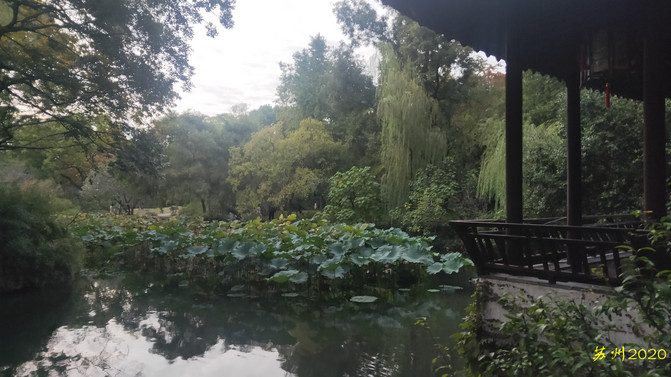
After I left the Humble Administrator's Garden and returned to the hotel along Pingjiang Road, I still had the strength, so I set off alone again and walked all the way down the street to the gate of Soochow University (the west gate of the headquarters). I had a vague impression of deja vu, and a series of memories also surfaced in a trance. It seemed that when I was 20 years old, I once walked through this gate, passed through this street, and ate a bowl of fried noodles in a small shop bordering on the door. Then I passed through the simple and simple old streets and alleys, and watched Gusu's grandma washing clothes and vegetables by the small bridge and flowing water. Perhaps only the busyness of the people in Qushui and Wu Nong's soft language are the longest impression I have of Suzhou. The smoke from cooking and the fragrance of books are mixed in my memory, telling the story of the glory of the year.
October 8, return
Today, the high-speed train returned home, and no more scenic spots were arranged. When I got up in the morning, I took a casual stroll around Guanqian Street, which was a final farewell to Suzhou for this visit to the old place. Goodbye, Suzhou, goodbye, my youth that has gone away.
Previous Article:Suzhou Lili, the "Four Miles of Jiangnan", enjoy the slow life of Jiangnan water town and taste the story that comes out of the alley
Next Article:The misty rain and blue waves commemorate the lonely July-a trip to Hangzhou, Suzhou and Wuzhen
